2006 Wal-Mart FLW Walleye Tour season preview
New venues, better payouts greet world’s top walleye anglers
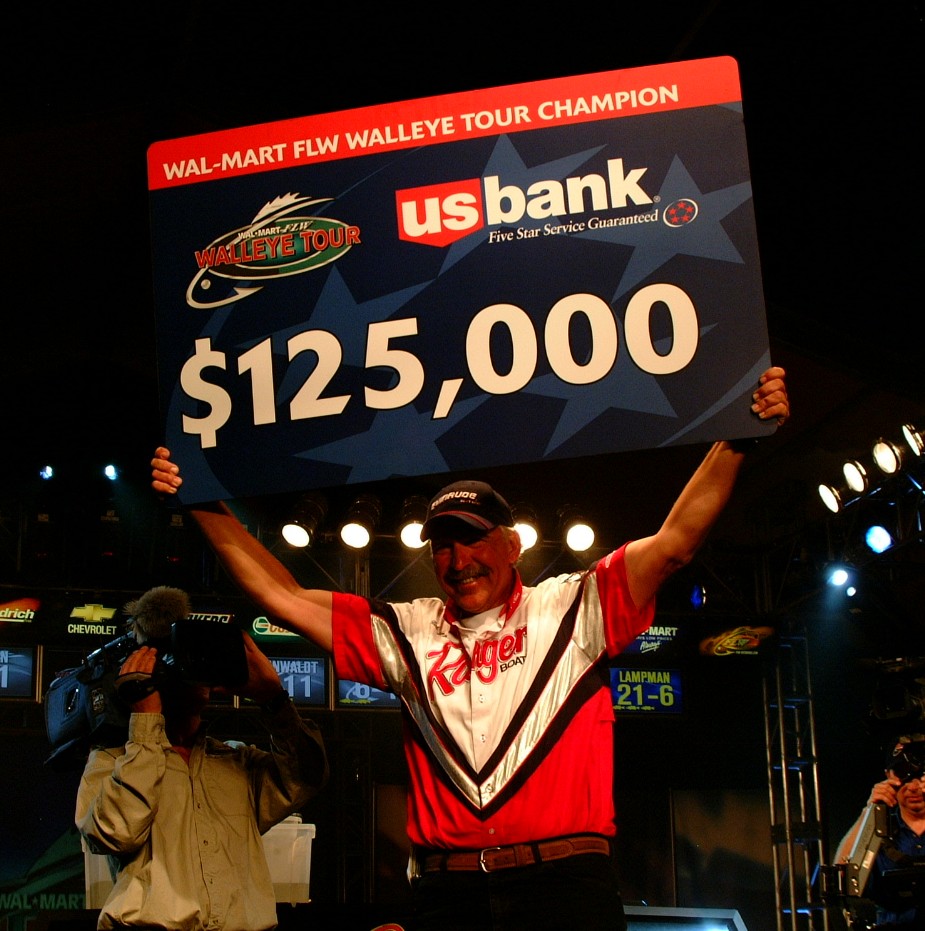
With the 2006 Wal-Mart FLW Walleye Tour season just weeks away, the anticipation has reached an all-time high. To start, the $2.69 million tour will kick off its season with a full field of 150 pros and 150 co-anglers. In fact, all four qualifying events filled to capacity in record time.
Part of this response was due to FLW Outdoors adding several new sponsors, including G3 Boats and Polar Kraft, allowing the organization to offer the sport’s largest cash paybacks. Pros will be fishing for top awards of $60,000 cash in every qualifier plus cash bonuses totaling $40,000 from G3, Polar Kraft, Ranger, Evinrude and Yamaha. Pros who advance to the no-entry-fee championship will fish for a top award of $100,000 plus $50,000 in bonuses.
Co-anglers also have a shot at collecting sizable paychecks, with as much as $18,000 cash available for regular-season wins and up to $22,000 up for grabs for the championship victor.
Adding to the excitement is the fact that each of these tournaments and the $675,000 Wal-Mart FLW Walleye Tour Championship will be featured in one-hour episodes of “FLW Outdoors,” which airs every Sunday at 11 a.m. ET on FSN.
Clearly, this season will be remembered as a milestone in the advancement of professional walleye angling. Now, with the logistics in the rear-view mirror, let’s get on with the fishing.
Detroit River
Trenton, Mich.
April 5-8
The first stop of the 2006 FLW Walleye Tour is home to the peaceful, scenic waters of the Detroit River. All joking aside, the Motor City is home to some of the best walleye fishing in North America.
This season, the tournament will be a river-only event, meaning both Lake St. Clair and Lake Erie will be off limits. Still, FLW Walleye Tour anglers will have approximately 35 miles of river in which to work, with both U.S. and Canadian waters in play.
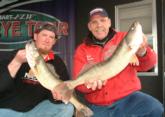 Pro Rick LaCourse, a native of Port Clinton, Ohio, and self-proclaimed river rat, feels that the first event of the season is shaping up nicely. In early April, anglers will find walleyes in all stages of the spawn. LaCourse said most of fish in the river are transient fish that roam between Lake St. Clair and Lake Erie.
Pro Rick LaCourse, a native of Port Clinton, Ohio, and self-proclaimed river rat, feels that the first event of the season is shaping up nicely. In early April, anglers will find walleyes in all stages of the spawn. LaCourse said most of fish in the river are transient fish that roam between Lake St. Clair and Lake Erie.
“There are a lot of 18- to 21-inch fish from that great year class we had three years ago,” LaCourse said. “The two main factors in this tournament are weather and water clarity. If the water is clear, the jiggers are going to shine. If the water is muddy, the handliners will have an advantage because they can keep the bait in the strike zone longer.”
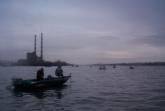 Expect many of those jiggers to be employing the 3/8-ounce variety and up to 1 ounce in size, depending on water levels. Most anglers will tip these jigs with either shiners or Berkley plastics, which are especially effective on the Detroit River. As for the handliners, an assortment of crankbaits will likely be the meal ticket.
Expect many of those jiggers to be employing the 3/8-ounce variety and up to 1 ounce in size, depending on water levels. Most anglers will tip these jigs with either shiners or Berkley plastics, which are especially effective on the Detroit River. As for the handliners, an assortment of crankbaits will likely be the meal ticket.
As for structure, LaCourse said rock piles, channel breaks and sand points all hold fish.
“There really are no secrets on the Detroit River,” he said.
LaCourse also pointed out that for an angler to be successful in this event, he must be able to adapt to changes in fish movement and water conditions in order to be consistent.
“You will see a bag that is over 30 pounds, but that angler might not necessarily win. The guy that can be consistent and pull 20-something each day while adapting with the fish will be the winner.”
Mississippi River
Red Wing, Minn.
May 3-6
For the second event of the season, 300 of the best walleye anglers in the world will head north to the Land of 10,000 Lakes. Despite Minnesota’s reputation for having the finest walleye lakes in the country, the FLW Walleye Tour will be fishing the walleye-rich waters of the Mississippi River near Red Wing.
While anglers can technically fish in Pools 3, 4 and 5, most will likely choose to stay in the friendly confines of Pool 4, which is 48 miles long itself.
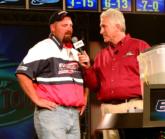 Pro Jarrad Fluekiger of Alma, Wis., has been guiding on the river for the past 17 years. While he’s excited the tour is coming to his home water, Fluekiger recognizes the pressure of being one of the local favorites.
Pro Jarrad Fluekiger of Alma, Wis., has been guiding on the river for the past 17 years. While he’s excited the tour is coming to his home water, Fluekiger recognizes the pressure of being one of the local favorites.
As far as tactics are concerned, Fluekiger believes this tournament will be similar to Devils Lake, which translates into exceptional angling diversity.
“If the water gets high and dirty, pulling live bait in the shallow backwaters could be an effective technique and the handliners will play a role,” Fluekiger said. “Three-ways, jigs and crankbaits are also popular presentations.”
Fluekiger said all types of live bait will be used in the event, including night crawlers, leeches, minnows and willow cats.
In addition to backwaters, channel edges and wing dams are popular Mississippi River hot spots.
“The whole system will be in transition, so it should be an interesting tournament,” he said.
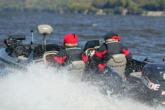 When Fluekiger describes the fishery as being in transition, he refers to the fact that all or nearly all the walleyes will be spawned out by early May. After walleyes spawn, they become lethargic before embarking on a massive feeding binge. If the forecast calls for warm temperatures, these walleyes will quickly change their behavior and become aggressive.
When Fluekiger describes the fishery as being in transition, he refers to the fact that all or nearly all the walleyes will be spawned out by early May. After walleyes spawn, they become lethargic before embarking on a massive feeding binge. If the forecast calls for warm temperatures, these walleyes will quickly change their behavior and become aggressive.
“If the water is normal, it is going to take 17 pounds a day to make the cutoff. The higher the water and the higher the water temperature, the heavier the weights will be. To be successful, I think you’re going to have to have a different bite every day. I don’t think there are going to be any spots that hold a four-day bite.”
Devils Lake
Devils Lake, N.D.
June 7-10
A trip to Devils Lake in June can only mean one thing: a catchfest of epic proportions. Last season, it took nearly 90 pounds to win the event and pro Mark Courts expects a similar, if not better bite.
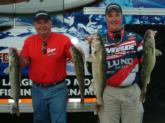 “This is the earliest we’ve been to Devils Lake,” Courts said. “I think you might see that 100-pound mark be broken.”
“This is the earliest we’ve been to Devils Lake,” Courts said. “I think you might see that 100-pound mark be broken.”
Courts would know, as the Harris, Minn., native has placed in the top 10 in each of the past three visits to Devils Lake.
Per usual, the Devils Lake event will come down to weather and wind. If the weather is calm, a stellar bobber bite in the trees will likely ensue. If the prairie winds howl, most anglers expect a steady casting bite on weedbeds.
Due to those variable winds, Courts says he never quite feels comfortable on Devils Lake.
“You’re basically in a prairie, and the wind can change on you in an instant. I try and look for three or four quality spots. If you’re fishing a spot and the wind comes up, the fish will likely spook out. You definitely have to have multiple locations and multiple weather patterns.”
 Besides fishing bobbers in the trees and casting crankbaits to weedbeds, Courts said he thinks bottom bouncers, blades and trolling gravel roads could play a role in determining the winner.
Besides fishing bobbers in the trees and casting crankbaits to weedbeds, Courts said he thinks bottom bouncers, blades and trolling gravel roads could play a role in determining the winner.
“Because of its diversity, this is a lake that everybody looks forward to. There isn’t a lake that we fish where all these techniques come into play.”
Courts went on to make a few loose predictions.
“It will take right around 20 pounds a day to make the cut. I think you’re going to see a lot tighter race with 130 guys fishing all four events.”
Green Bay
Green Bay, Wis.
July 12-15
After Pat Neu’s record-setting performance on Green Bay last year, FLW Walleye Tour anglers have to be licking their chops when they see Green Bay scheduled as the fourth and final qualifying event of the season.
This season, the tour visits Titletown more than two months later than last year, when most of the field was fishing in extremely shallow water, some as shallow as 4 feet.
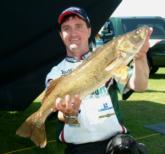 According to Hatley, Wis., pro Tom Keenan, much of the field will still be fishing relatively shallow, but closer to 20 feet of water. Keenan placed ninth at the Green Bay event last year and scored a second-place finish at the 2001 FLW Walleye Tour Championship held on Green Bay. He says the biggest difference in this year’s event is that alewives will be in the bay spawning.
According to Hatley, Wis., pro Tom Keenan, much of the field will still be fishing relatively shallow, but closer to 20 feet of water. Keenan placed ninth at the Green Bay event last year and scored a second-place finish at the 2001 FLW Walleye Tour Championship held on Green Bay. He says the biggest difference in this year’s event is that alewives will be in the bay spawning.
“Now, we will be trying to find an area where the alewives aren’t,” Keenan said. “Most anglers will stay in the bay itself, which makes it nice, because we won’t have to travel too far.”
Just like last year, Keenan fully expects the vast majority of the field to be pulling spinners and night crawlers. The only exception will likely be a few competitors who choose to pull crankbaits.
“A lot of fish will be on flats, some will be on rock piles. The fishing will be good, with a lot of 5- and 6-pound fish being caught.”
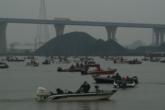 Keenan described the fishing on Green Bay in July as being very similar to Lake Erie in that the fish are spread out. Anglers won’t be fishing a precise spot, but rather will be trolling a 200-yard-by-200-yard piece of water.
Keenan described the fishing on Green Bay in July as being very similar to Lake Erie in that the fish are spread out. Anglers won’t be fishing a precise spot, but rather will be trolling a 200-yard-by-200-yard piece of water.
“Everything is timing in the bay. The water will be a little bit dirty that time of year. If you remember day four from last year, everything was so calm and clean that the bite finally turned off. That shouldn’t be a problem in July.”
Keenan predicts it will take a 5-pound average to make the top 10.
“There are just too many good anglers and too many walleyes to not catch fish. Wind will also play a key; a big wind makes fishing really good in the bay.”
FLW Walleye Tour Championship
Lake Oahe
Pierre, S.D.
October 4-7
After four demanding qualifying events, the top 50 walleye pros and top 50 co-anglers will be summoned to fish the no-entry-fee, $675,000 Wal-Mart FLW Walleye Tour Championship on Lake Oahe in Pierre, S.D.
Much like the Mississippi River near Moline, Ill., Lake Oahe will provide the world’s best walleye anglers with a fitting end-of-the-season test.
According to the South Dakota Department of Game, Fish and Parks, anglers will only be allowed to keep one fish over 20 inches. But with pros and co-anglers fishing together, two fish over 20 inches can be weighed per boat. Furthermore, culling will not be allowed and a 14-inch minimum size restriction will be enforced.
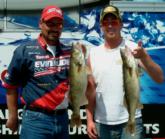 Rick Olson, a Mina, S.D., resident, is no stranger to success on Pierre’s prairie pond. Olson says a perfect day would consist of catching three slot fish, which would measure around 19 inches, then boating two additional fish over 20 inches.
Rick Olson, a Mina, S.D., resident, is no stranger to success on Pierre’s prairie pond. Olson says a perfect day would consist of catching three slot fish, which would measure around 19 inches, then boating two additional fish over 20 inches.
“Being a reservoir, the fish are always moving,” Olson said. “It’s rare to fish the same spot two days in a row. The key is finding the right area and being willing to adjust. You need to be constantly moving with the fish.”
Olson grew up fishing Lake Oahe and says the fishery is healthy and that he expects a good bite.
“For the last seven or eight years, we lost our baitfish and the walleyes went on a feeding frenzy, and most of the big fish were taken out. Now the baitfish are back and the population is good, but the big ones still aren’t there yet.”
 Most anglers will be fishing the edges of flats, channel swings and points. In early October, the fish can be anywhere from shallow to very deep. With that in mind, many different presentations should be in play. Those include live-bait rigging with minnows or night crawlers, pitching jigs to shore, and casting and trolling crankbaits.
Most anglers will be fishing the edges of flats, channel swings and points. In early October, the fish can be anywhere from shallow to very deep. With that in mind, many different presentations should be in play. Those include live-bait rigging with minnows or night crawlers, pitching jigs to shore, and casting and trolling crankbaits.
“In October, the only concern I have is the high winds. The wind shouldn’t affect the bite, but it could prevent guys from getting to their spots. I’m going to say that you’re going to need 16 or 17 pounds per day to be in contention.”